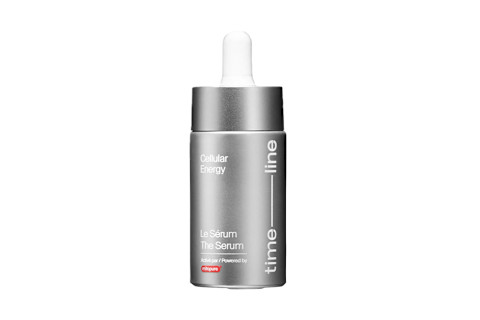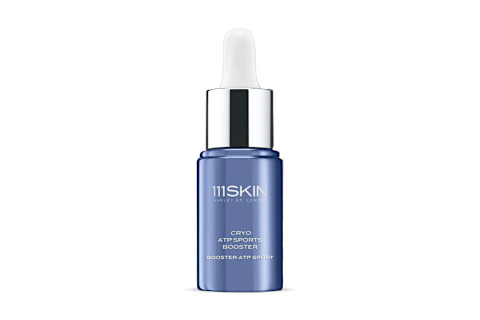The Next Big Wave Of Actives Support Mitochondrial Health
There are a few beauty buzzwords every skin care enthusiast instantly knows: collagen, elastin, ceramides, retinol, niacinamide, hyaluronic acid, and so on. If you take it one step further, the true science nerds will understand the relevance of a few other terms: things like fibroblasts, messenger peptides, or stratum corneum.
But only the folks who are really interested in skin care at the cellular level will appreciate the importance of the mitochondria and adenosine triphosphate (ATP).
Some folks may recognize the term mitochondria from high school biology class, where it's given the moniker "powerhouse of the cells." While this is true, there is so much more to know about these energy suppliers, especially within the context of skin health and skin care.
In fact, it just might be the next big thing in beauty.
The connection between mitochondria, skin health & aging
The mitochondria exist in almost every cell in our body, where they produce energy. The chemical energy created by the mitochondria is stored in the ATP, which is your body's energy currency. ATP is transported and transferred throughout the body, where it powers up various functions. Yes, this includes cells that make up the skin as well.
Skin cells require a constant supply of ATP to fuel a variety of functions1, the most important of which is skin regeneration itself. The skin is what's known as a "high turnover organ." This means that the cells turn over at a quicker rate than other organs of the body. This makes sense given the skin is a barrier and is exposed to many external stressors daily.
In youth, skin cell turnover is very rapid. Research indicates that epidermal renewal takes place about every 20 days2 for folks aged about 20. But for older folks, this renewal time triples, with epidermal renewal taking up to 60 days3 later in life.
ATP is involved in so much more than just skin cell turnover, however. For example, ATP is used by fibroblasts4 to create collagen and elastin, the skin's structural proteins that keep the dermis both firm and flexible. It's also used to produce proteins, lipids, and other molecules that make up the skin barrier and maintain hydration. And ATP plays a role in skin protection5 by fueling both the inflammatory and antioxidant response.
Clearly, the skin relies on ATP to look and feel healthy. Unfortunately with age, due to health concerns, or from environmental stressors, that energy produced by the mitochondria may wane.
When mitochondria health weakens and energy production slows, our body isn't able to produce as many of the things that keep our skin looking vibrant, such as collagen, elastin, and hyaluronic acid. It's also not as capable of healing itself, regenerating the skin barrier, or protecting itself from external aggressors. Finally, it also means slower skin cell turnover as with age. (Among many other issues, I might add, but this article is specifically about mitochondria's role in skin health, so that's what I'm keeping it to.) Essentially: The depletion of ATP production and mitochondrial dysfunction1 is at the root of almost all of the signs we associate with skin aging.
This is why many beauty brands have started zeroing in on mitochondrial health as a previously underutilized solution for skin aging. And what they're finding is that it's perhaps the missing link for younger-looking skin for longer.
Why the most innovative beauty brands have started prioritizing mitochondrial health
Up until recently, mitochondrial health just wasn't a topic much discussed in the beauty space. It's not that it was outright ignored but was perhaps just not well understood—especially by the general public. But that's changing thanks to the science of longevity.
Over the last several years, longevity research exploded. Not only does it seem like life span conversations were happening everywhere, but their practical implications became more accessible. In fact, the consultancy group The Future Laboratory noted that the future of health and beauty was intrinsically tied to what has been called "longevity lifestyle." And according to a report on "Advanced Aesthetics" from Longevity Technology, the future of longevity is not just about optimizing longevity on the inside but externally as well.
This melding of aesthetic sciences and longevity research has led to exciting, innovative areas of focus in the skin care space. And mitochondrial health is perhaps the best example of this.
Just take L'Oréal-backed Timeline Nutrition & Skin Care. (The beauty conglomerate invested in the company earlier this year.) The company started as a supplements company with one hero product, Mitopure Softgels, but then expanded into skin care featuring the same active. The collection is built around a proprietary postbiotic called Urolithin A, which stimulates cellular cleanup and enhances mitochondrial health. Clinical research has found that it can even slow the aging process in the skin and protect the skin from both internal and external factors of aging.
Or skin care brands even utilize ATP itself in their formulas. For example, Skin ATP includes a novel, proprietary liposomal delivery system that delivers encapsulated ATP directly into the cell—where it can help replenish what's lost with age. And 111skin Cryo ATP Sports Booster uses ATP to regenerate tired, dull-looking skin.
The takeaway
Time and time again, research has circled back to how vital mitochondrial health is for overall health and longevity6. Because the mitochondria essentially fund every single chemical, biological, and cellular process in the body with energy, they hold a lot of power. In a sense, mitochondria govern how our bodies function—and therefore, how they function with age7.
That's why the most innovative beauty brands have started zeroing in on how they can help support mitochondrial health.
7 Sources
- https://www.nature.com/articles/s41419-020-2649-z
- https://pubmed.ncbi.nlm.nih.gov/6827031/
- https://www.ncbi.nlm.nih.gov/pmc/articles/PMC2861991/#:~:text=In%20humans%2C%20it%20is%20estimated,layer%20of%20the%20epidermis4.
- https://www.ncbi.nlm.nih.gov/pmc/articles/PMC4528580/#:~:text=In%20fibroblast%20cells%2C%20ATP%20has,cell%20%5B36%2C37%5D.
- https://pubmed.ncbi.nlm.nih.gov/15129319/
- https://www.ncbi.nlm.nih.gov/pmc/articles/PMC2686342/
- https://www.tandfonline.com/doi/full/10.1080/14728222.2023.2277240#:~:text=Mitochondria%20play%20a%20pivotal%20role,aging%20process%20for%20healthy%20longevity.



